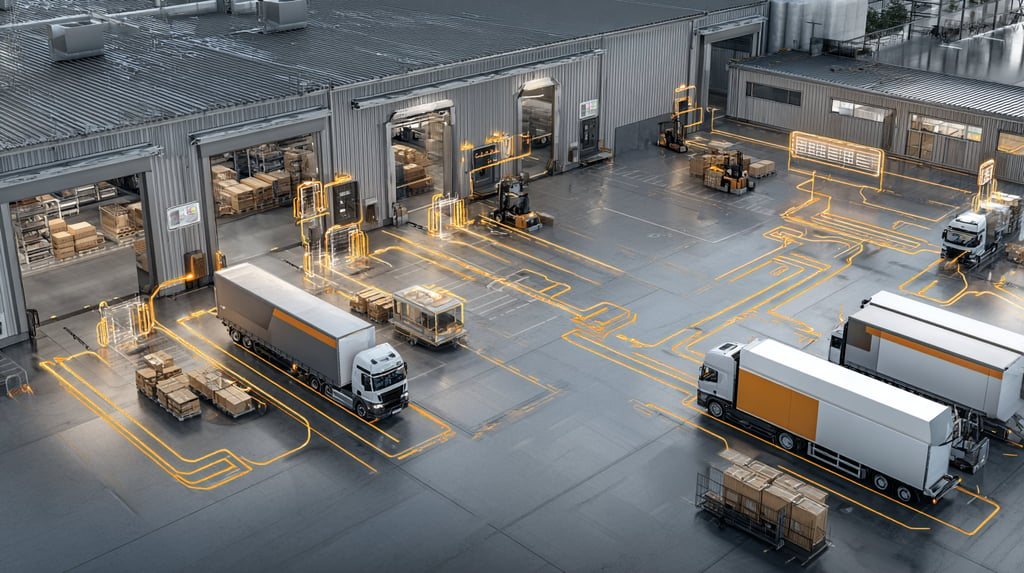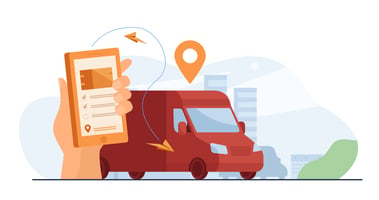In today’s lifestyle and fashion retail, the pace of business has radically shifted. Consumer...
Cross Docking
It’s been five days. Your dealer in Chandigarh is calling again. Shelves are empty, customers are waiting, and your competitor’s products are already there. Your shipment left Noida almost a week ago, but PTL delays, handoffs, and rising freight costs have left the shipment stuck in limbo. Now you’re at the same painful crossroad every manufacturer faces. Do you sink crores into a new warehouse to guarantee speed, even if demand is uncertain? Or do you avoid Capex, stick with PTL, bleed margins, and accept long lead times?
This trade-off is exactly what cross docking was designed to solve.
Cross docking is the smarter middle path. Goods don’t sit in storage. They move straight from inbound trucks to outbound vehicles. No warehouses. No wasted handling. No delays. Done right, it means lower costs, faster deliveries, and customers who never have to wait.
Let’s break down how it works, why the old models fail, and why shared cross docking is becoming the future of supply chains in India.

|
Key Takeaways from this article
|
Why Tribal Knowledge Doesn’t Scale
At its core, cross docking is a distribution model where shipments are unloaded from one truck, sorted, and reloaded into another truck heading toward the final destination. The easiest way to picture it is to think of an airport terminal. Passengers don’t live there. They land, switch flights, and continue their journey. In the same way, products don’t wait around in a warehouse. They pause at a cross dock only long enough to change vehicles and routes.For manufacturers, this means:
- Faster speed to market
- Lower handling and storage costs
- Almost zero inventory holding at intermediate points
Why Are Traditional Models Inefficient and Expensive?
Until now, expanding into new geographies left manufacturers with three imperfect options.
Local warehouses or DCs -They guarantee fast deliveries through milk runs. But the Capex is massive, often unjustifiable for regions where demand is still small or unpredictable.
PTL (Part Truck Load) direct shipments - PTL pricing is based on dimensional weight, which punishes bulky products like furniture or paint. Every extra handoff slows down delivery, increases damage risk, and leaves customers waiting.
Dedicated cross docks - Some large shippers run their own. Costs drop, but complexity shoots up. Managing waybills, labeling, visibility, and transporter registrations is an operational nightmare. And because inbound volumes are thin, most of these facilities sit under-utilized.
All three leave you trapped between high Capex, high Opex, or high complexity.
The Fourth Option: Shared Cross Docking
Now imagine a model that gives you the speed of a fulfilment centre, the cost efficiency of FTL, and the simplicity of a plug-and-play service.
That’s shared cross docking. At TransportOne by Delhivery, we’ve built this as a multi-tenant service inside our facilities. Multiple shippers share the same cross dock, keeping utilization high and costs low. Everything is powered by TransportOne’s AI-driven planning, automated waybill management, and milk run optimization.
Here’s how it works:
- Planned at origin. Before goods even move, TransportOne’s AI plans cross-docked vehicles in advance, so utilization is high and routes are clear.
- Goods move from your regional warehouse to a Delhivery facility via a dedicated FTL.
- At the cross dock, shipments are broken down by destination. There’s no in-warding — goods never enter storage.
- Smaller vehicles, planned through TransportOne, execute milk runs to reach multiple dealers in a cluster.
Proof in Action: A Multinational Furniture Company
A furniture company was running a dedicated warehouse in Chandigarh to serve Punjab, Haryana, and Himachal. The monthly cost: over ₹16.5 lakhs for ~200 tons of goods. By switching to a shared cross dock in Mohali, the model changed. Goods moved FTL from their Gurgaon RDC to the shared facility, were broken down, and dispatched on milk runs. The outcome was clear:
- Nearly 20% cost savings
- Faster deliveries to dealers
- Zero Capex sunk into underutilized warehousing
- No PTL risks of delays and damage
What worked for the furniture company isn’t unique. The same shared cross docking model is now reshaping entire industries that face similar challenges.
Who Gains the Most
Cross docking creates the most impact in industries where goods are bulky, demand is scattered, and speed is critical:
- Paints & coatings: Replenish dealers fast without holding stock everywhere.
- Garments & apparel: Stock multiple retail outlets in Tier II cities efficiently.
- Furniture & décor: Move bulky shipments without PTL penalties.
- Auto components: Distribute spare parts faster and at lower cost.
- FMCG: Reach rural distributors and small retailers without new warehouses.
- Plastics & packaging: Serve multiple business clients in a region at lower cost.
For these industries, cross docking isn’t just about saving money - it’s about keeping shelves stocked and dealers loyal. But if it’s so powerful, why hasn’t everyone adopted it yet?
Here’s why companies who tried failed
Because when companies tried to run their own, most hit the same hidden costs.
- Waybill management across dozens of dealers
- Manual labeling and route planning
- Spot sourcing is constrained due to strict regulatory mandates
- Visibility gaps between the FTL leg and milk runs
That’s why even large shippers find it hard to scale cross docking efficiently. TransportOne eliminates these pain points. The platform automates waybills, labeling, route planning, and compliance - making cross docking seamless. You get all the benefits, with none of the operational burden.
The Bigger Picture
Shared cross docking isn’t just another movement model. It’s a fundamental shift in how supply chains expand. Instead of locking Capex into empty warehouses or bleeding margins on PTL, manufacturers now have a third path: scalable, tech-enabled, and cost-effective. At scale, this model represents a massive opportunity in India. But the bigger story is what it means for shippers right now: faster entry into Tier II and Tier III cities, leaner networks, and lower risk. Which brings us to the real choice shippers face today.
Every month you wait, you’re either overspending on PTL or tying up capital in warehouses that don’t pay back. Shared cross docking changes that equation. It delivers speed without waste - and with TransportOne, it’s finally accessible. The future of logistics won’t be built on more warehouses. It will be built on smarter networks. Cross docking is the fastest way to get there. The only question is whether your supply chain is ready to move as fast as your market demands.



